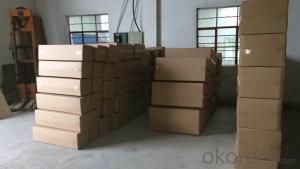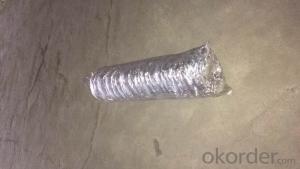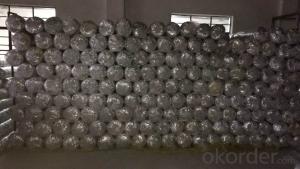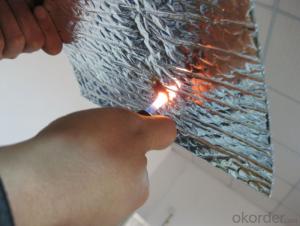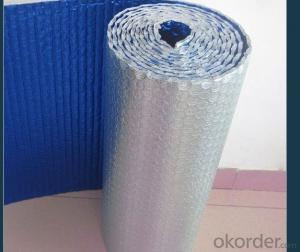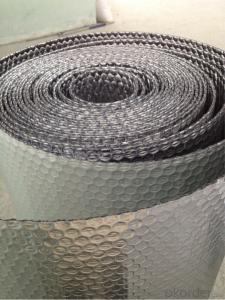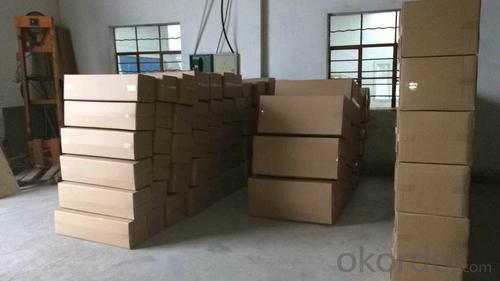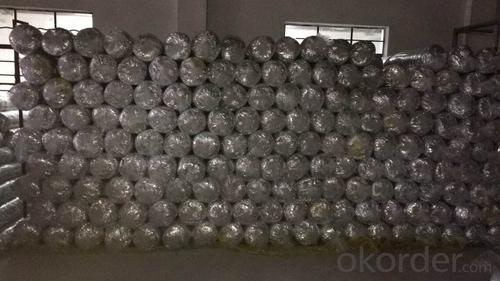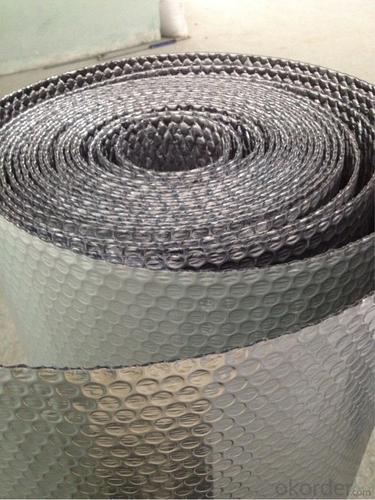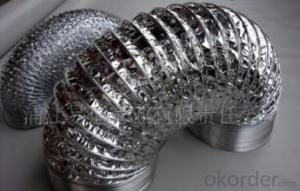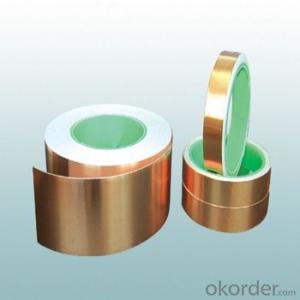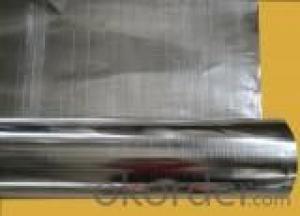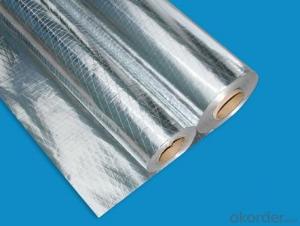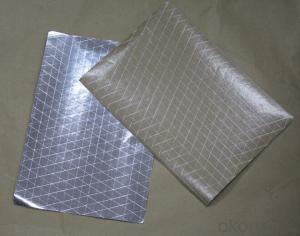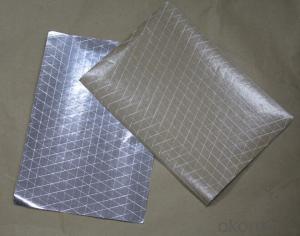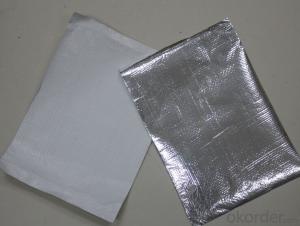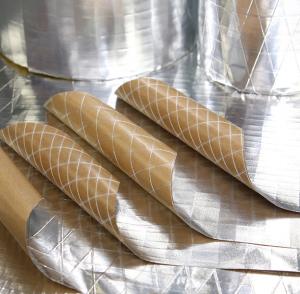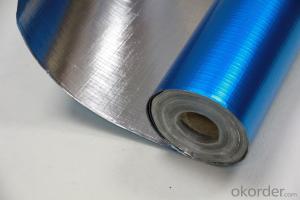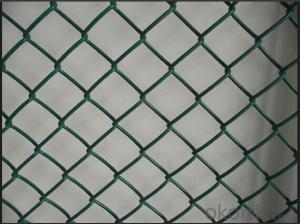Aluminum Foil Facing Insulation Flexible Ducts Bubble Foil Mylar AL+PET+LDPE AL+PET
- Loading Port:
- Tianjin
- Payment Terms:
- TT OR LC
- Min Order Qty:
- 12 m²
- Supply Capability:
- 30000 m²/month
OKorder Service Pledge
OKorder Financial Service
You Might Also Like
Specifications
aluminum foil bubble insulation manufacture
thermal insulation
Construction:
Tri-directional scrim Heat Sealing Aluminum Foil : Corrosion resistance Coating/Foil: 7Microns/anti-heat adhesive/Kraft: 60 or 50gsm /Tri-way Scrim/Vinyl: 25Micons.
Application:
Heat Sealing Aluminum Foil is suitable for on-line lamination with thermal insulation such as glass wool blanket, rock wool or mineral wool by heating.
An thermal insulation facing to block radiant heat coming into house through the roof and walls during the summer and retain indoor heat generated during the winter. Heat Sealing Aluminum Foil facing also used as a water vapor barrier in air conditioning ductworks and cold rooms.
Benefit:
Heat FSK Facing is no need applying extra adhesive. Better corrosion resistance.
Does not contain hazardous chemicals or harmful materials that cause itching or respiratory problems.
A radiant barrier stops 97% of radiant heat transfer which improves the performance of the insulating material. Scrim reinforced for strength and durability.
Roll Width: 1.2M, 1.25M.etc
Roll Length: Up to 2500M.
- Q: The user is asking if they can reuse their old aluminum foil facing to create new ones once it becomes worn out.
- <p>No, you cannot create new aluminum foil facings from old, worn-out ones. Aluminum foil facings are typically made from a specific type of aluminum that is bonded to a substrate. Once it wears out, the aluminum layer is compromised and cannot be reused to make new facings. Recycling old aluminum foil is the best option to reduce waste and conserve resources. You can recycle aluminum foil, which will then be processed and turned into new aluminum products.</p>
- Q: What distinguishes various grades of aluminum foil sheets from one another?
- <p>Different grades of aluminum foil sheets are distinguished by their thickness, strength, and purity. Grade 1 is the purest and softest, used for food wrapping and baking. Grade 2 is harder and more tear-resistant, suitable for heavy-duty use like grilling. Grade 3 is an alloy and offers high strength and durability, often used in industrial applications. Grade 4 is a heat-treatable alloy, providing high strength and used in aerospace and automotive industries. Each grade has specific applications based on its unique properties.</p>
- Q: What precautions should be taken when handling hot food using aluminum foil as a cooking tool?
- <p>When handling hot food using aluminum foil, first ensure the foil is thick enough to withstand high temperatures without puncturing. Always use heat-resistant gloves or a thick cloth to avoid burns. Do not wrap food directly in aluminum foil if it's very hot, as this can cause the foil to tear or the food to stick. Allow the food to cool slightly before wrapping. When removing the foil from the heat source, use tongs or a spatula to avoid direct contact with the hot foil. Be cautious of steam when opening the foil, as it can be very hot.</p>
- Q: Is it possible to recycle aluminum foil with a facing material attached to it?
- <p>Yes, aluminum foil facing can be recycled. However, it's important to separate the aluminum foil from the facing material before recycling. The facing material, often plastic or paper, can contaminate the aluminum recycling process. Most recycling facilities accept clean aluminum foil, but it's best to check with your local recycling center for specific guidelines. Proper separation and cleaning of aluminum foil can ensure it is effectively recycled and contributes to reducing waste and conserving resources.</p>
- Q: Is it safe and environmentally friendly to use plastic containers multiple times?
- <p>While it is possible to reuse plastic containers for multiple uses, it is essential to consider the type of plastic and its intended use. Numbered plastics, such as PET (1), HDPE (2), and PP (5), are generally safe for reuse, but it's best to avoid long-term reuse of containers that have held acidic or fatty foods, as this can lead to leaching of chemicals. Reusing plastic containers can be a more sustainable choice, but it's crucial to follow proper cleaning and storage practices to maintain hygiene and safety. Always check if the container is labeled as microwave-safe or dishwasher-safe before reusing it for those purposes.</p>
- Q: Is it safe to use recycled aluminum foil as a facing material in cooking?
- <p>No, it is not recommended to use recycled aluminum foil for cooking. Recycled aluminum foil may contain impurities, contaminants, or have been exposed to chemicals that could be harmful when heated. Additionally, the quality and safety of recycled materials are often not as strictly controlled as new materials, which could lead to potential health risks. It's always best to use new, high-quality aluminum foil for cooking to ensure food safety and hygiene.</p>
- Q: How to properly handle aluminum foil when it is exposed to hot or cold temperatures.
- <p>When handling aluminum foil that is hot or cold, it's best to use tongs, a fork, or a pair of gloves to avoid direct skin contact. This prevents burns from hot foil or frostbite from cold foil. If the foil is being used in cooking, ensure it's not in direct contact with the heat source for prolonged periods to prevent melting. For cold applications, like insulation, make sure the foil is dry to maintain its effectiveness as a barrier. Always handle with care to prevent tearing or puncturing the foil, which could compromise its integrity.</p>
- Q: Describe the most effective method for cleaning aluminum foil facing surfaces after they have been used.
- <p>The best way to clean aluminum foil facing after use is to gently wipe it with a soft, damp cloth to remove any residue or food particles. Avoid using abrasive materials or harsh chemicals, as they can scratch the surface. If there is stubborn residue, a mild dish soap can be used with warm water. After cleaning, dry the surface thoroughly to prevent water spots and potential damage. Regular cleaning helps maintain the appearance and functionality of the aluminum foil facing.</p>
- Q: How can aluminum foil be organized in a kitchen drawer for easy access and to prevent it from crumpling?
- <p>The best way to store aluminum foil in a kitchen drawer is to use a foil storage box or a cardboard core. Cut off the cardboard tube from a roll of paper towels and place it inside the aluminum foil box. Unroll the foil and wind it around the cardboard tube, ensuring the shiny side is out. This prevents crumpling and makes it easy to tear off the desired amount. Alternatively, you can use a small plastic container with a tight-fitting lid to store the foil neatly and prevent it from unraveling.</p>
- Q: Is it possible to use aluminum foil facing in the process of making desserts or cakes?
- <p>Yes, you can use aluminum foil facing to make desserts or cakes. It is commonly used for lining baking pans to prevent sticking and to ensure easy removal of the baked goods. Aluminum foil is heat resistant and can be used in the oven, but it's important to avoid direct contact with the heating elements to prevent burning. For best results, use heavy-duty aluminum foil and ensure it covers the bottom and sides of the pan completely.</p>
Send your message to us
Aluminum Foil Facing Insulation Flexible Ducts Bubble Foil Mylar AL+PET+LDPE AL+PET
- Loading Port:
- Tianjin
- Payment Terms:
- TT OR LC
- Min Order Qty:
- 12 m²
- Supply Capability:
- 30000 m²/month
OKorder Service Pledge
OKorder Financial Service
Similar products
Hot products
Hot Searches
Related keywords
